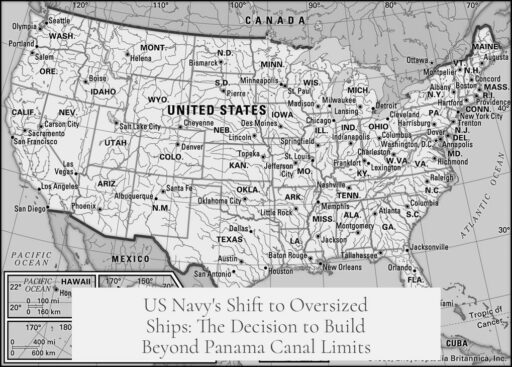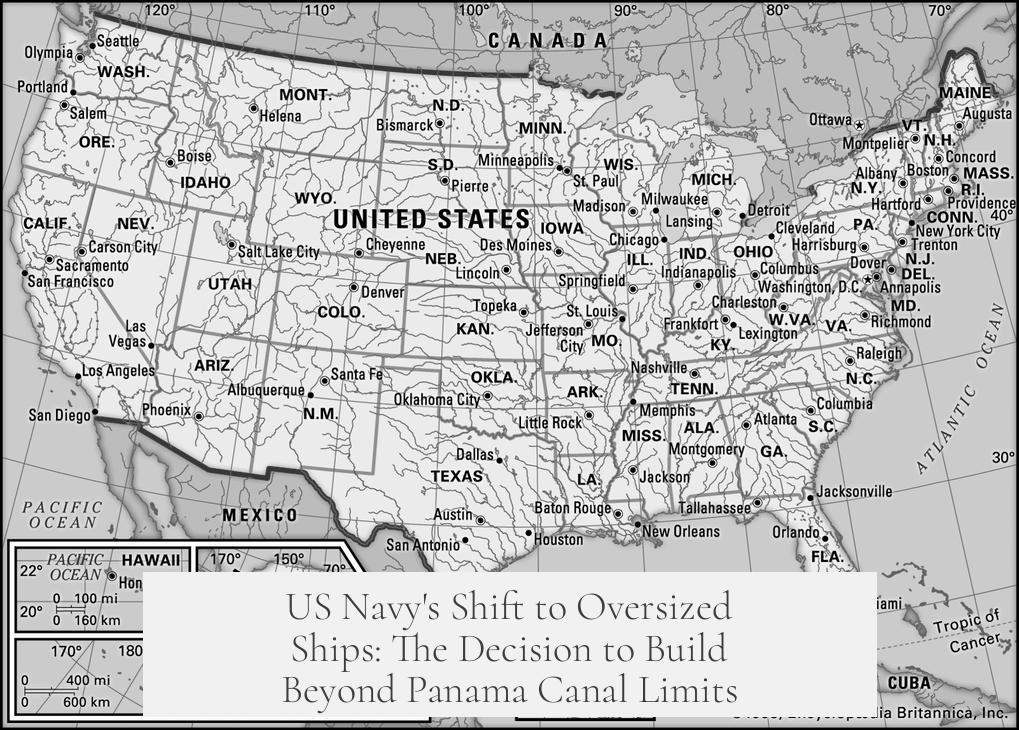The US Navy decided to build ships that could not fit through the Panama Canal starting around 1940, with the authorization of the Montana-class battleships through the Vinson-Walsh Act. This marked a strategic shift in naval design, enabling the construction of larger vessels unconstrained by canal size limits.
The Montana-class battleships, authorized by Congress in 1940 under the Two-Ocean Navy Act, were the first significant step toward building ships too large for the Panama Canal. These battleships emphasized size and firepower over mobility through the canal. Construction started but was stopped in 1942 due to wartime shipyard priorities and canceled in 1943.
The next major milestone was the USS Midway, an aircraft carrier laid down in 1943. It was the first American warship truly too large to transit the Panama Canal upon completion in 1945. The Midway featured an armored flight deck and carried more aircraft than earlier carriers. These capabilities required a size exceeding the canal’s dimensions.
In addition, several older battleships rebuilt after the Pearl Harbor attack, such as the Tennessee, West Virginia, and California, grew too large to pass through the canal after their modifications. This reflected a broader trend of increasing ship size during World War II.
This change resulted from a strategic decision that the Navy no longer needed to transfer ships between the Atlantic and Pacific through the canal frequently. Instead, the Navy built larger, more powerful fleets tailored to each ocean theater. This removed the previous design constraint of canal transit, allowing for substantially larger warships with increased armor, armament, and aircraft capacity.
- Montana-class battleships (1940) first planned ships too large for the canal.
- USS Midway (laid down 1943) was first completed large carrier too big for Panama Canal.
- Post-Pearl Harbor battleship rebuilds increased ships beyond canal size limits.
- WWII strategy shifted to separate ocean fleets, removing canal size limits as a design factor.
When Did the US Navy Decide to Build Ships That Couldn’t Fit Through the Panama Canal?
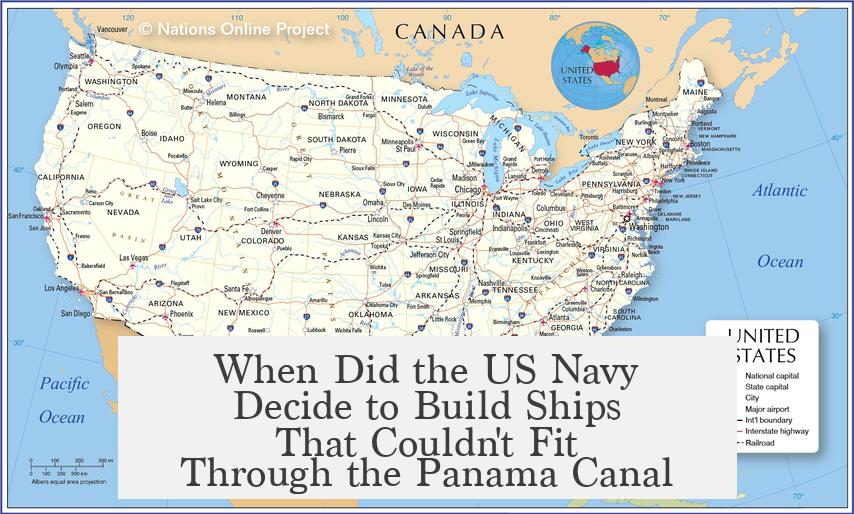
The US Navy made the decision to build ships too large to fit through the Panama Canal around 1940, starting with the Montana-class battleships authorized by the 1940 Vinson-Walsh Act. This moment marked a strategic shift for the fleet and Navy ship design philosophy, driven by changing global realities and technological advancements.
Let’s dive deeper into the story behind this fascinating naval evolution—one that involved big ambitions, bigger ships, and a bit of canal-size defiance.
The Montana-Class Battleships: The Trailblazers in Oversized Naval Design
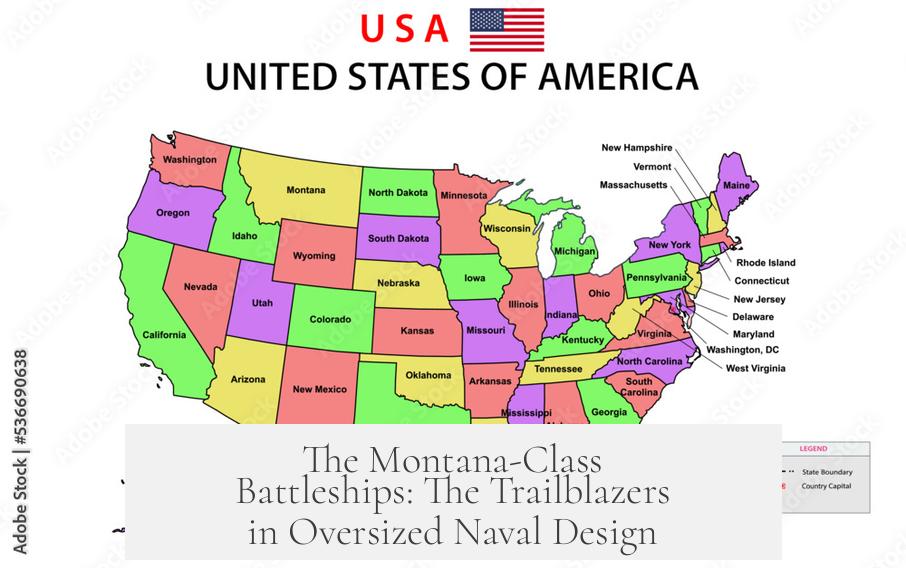
Back in 1940, the US Congress passed the Vinson-Walsh Act, often known as the Two-Ocean Navy Act. Its purpose? To vastly expand the Navy, enabling it to project power simultaneously across both the Atlantic and Pacific Oceans. The Montana-class battleships were born from this act. These warships were meant to be larger and more heavily armored than their predecessors, the Iowa-class battleships.
- Authorization and design: Montana-class battleships were authorized in 1940 and featured a formidable fourth main turret, beefing up their firepower substantially.
- Size and limitation: They were the first US Navy ships ordered with dimensions that would prevent them from fitting through the Panama Canal.
- Cancellation: Though construction began, the realities of wartime shipyard priorities forced cancellation in 1943, halting this ambitious project before completion.
The Montana-class represents the first clear case of the US Navy intentionally designing vessels too big for the canal. Why break the canal barrier? Because the Navy was preparing for a global conflict where size and firepower could no longer be constrained by passageways built decades earlier.
USS Midway: The First Operational Ship Too Big for the Canal
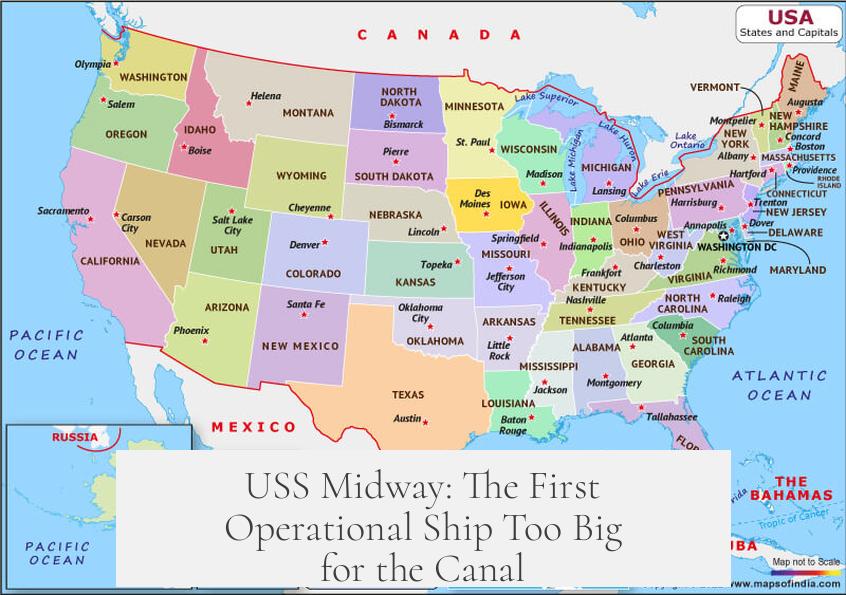
While the Montanas were bold plans, the first American warship actually completed that was too large to transit the Panama Canal was the USS Midway, an aircraft carrier laid down in 1943 but finished only in 1945. Midway ushered in the era of supercarriers that could carry more aircraft and boast armored flight decks.
- Design innovation: Midway was the first US carrier with an armored flight deck. It carried more planes than earlier carriers, breaking free from treaty bounds.
- Strategic shift: The Navy no longer needed to limit ship size to fit the canal. This allowed the expansion of deck size and armor, crucial for carrier survivability and offensive capability.
- Symbol of change: The Midway’s size highlighted the Navy’s shift to focus on power projection in multiple theaters without moving ships back and forth.
Imagine, before Midway, every warship was basically designed to fit through a narrow canal roughly 110 feet wide. Midway didn’t just stretch those limits; it waved goodbye to them.
Rebuilt Battleships Too Large for Canal Transit

Interestingly, not only new designs but also reconstructions contributed to ships exceeding the Panama Canal’s limits.
- After the attack on Pearl Harbor, the Navy heavily rebuilt and modernized some older battleships—like Tennessee, West Virginia, and California.
- The modernizations increased their size such that these upgraded battleships became too large to pass through the canal afterward.
This reflects a trend: naval warfare advancing at such a pace that earlier infrastructural constraints, like the canal’s dimensions, simply didn’t keep up.
Why Did the Navy Choose to Go Bigger Than the Canal Allowed?
The decisive factor came during World War II, when the US found itself confidently powerful enough to maintain distinct fleets in both oceans—Atlantic and Pacific. This eliminated the need for quick transitions from one ocean to the other.
“They could now afford to build a fleet for each theatre, and not move it around.”
This newfound strategic freedom let the Navy design ships with:
- Bigger flight decks for carriers, allowing more aircraft and improved capabilities.
- Heavier armor for better protection, critical during intense naval battles.
- Larger overall displacement, harnessing industrial advances and meeting emerging tactical needs.
By thinking beyond the Panama Canal, the Navy embraced innovation and future-proofed its warship designs for a global conflict of unprecedented scale.
Lessons from This Shift?
First, naval design is never static. It responds to strategic realities, global politics, and technological change. Second, infrastructure like the Panama Canal, no matter how revolutionary when built, can’t always dictate military strategy forever.
The US Navy’s choice to ignore the canal’s limits shows how strategic priorities can drive engineering breakthroughs—even if it means sidelining a trusty shortcut across the Americas.
In Summary
The US Navy first decided to build ships too big for the Panama Canal with the Montana-class battleships authorized in 1940. Although these ships were never completed, the decision was significant. Soon after, the USS Midway, laid down in 1943 and commissioned in 1945, became the first operational American warship too large to pass through the canal. Post-Pearl Harbor reconstructions also produced oversized battleships. The overarching reason? The strategic shift during World War II required dedicated fleets in both oceans, reducing the need to transit the canal and allowing the Navy to build bigger, more powerful ships unrestricted by canal dimensions.
Next time you hear about massive aircraft carriers or battleships, remember—sometimes, breaking free from ancient limits is the key to power on the high seas.
Curious how modern supercarriers compare? Want to know if the Panama Canal is still relevant for today’s Navy? Drop a comment!
